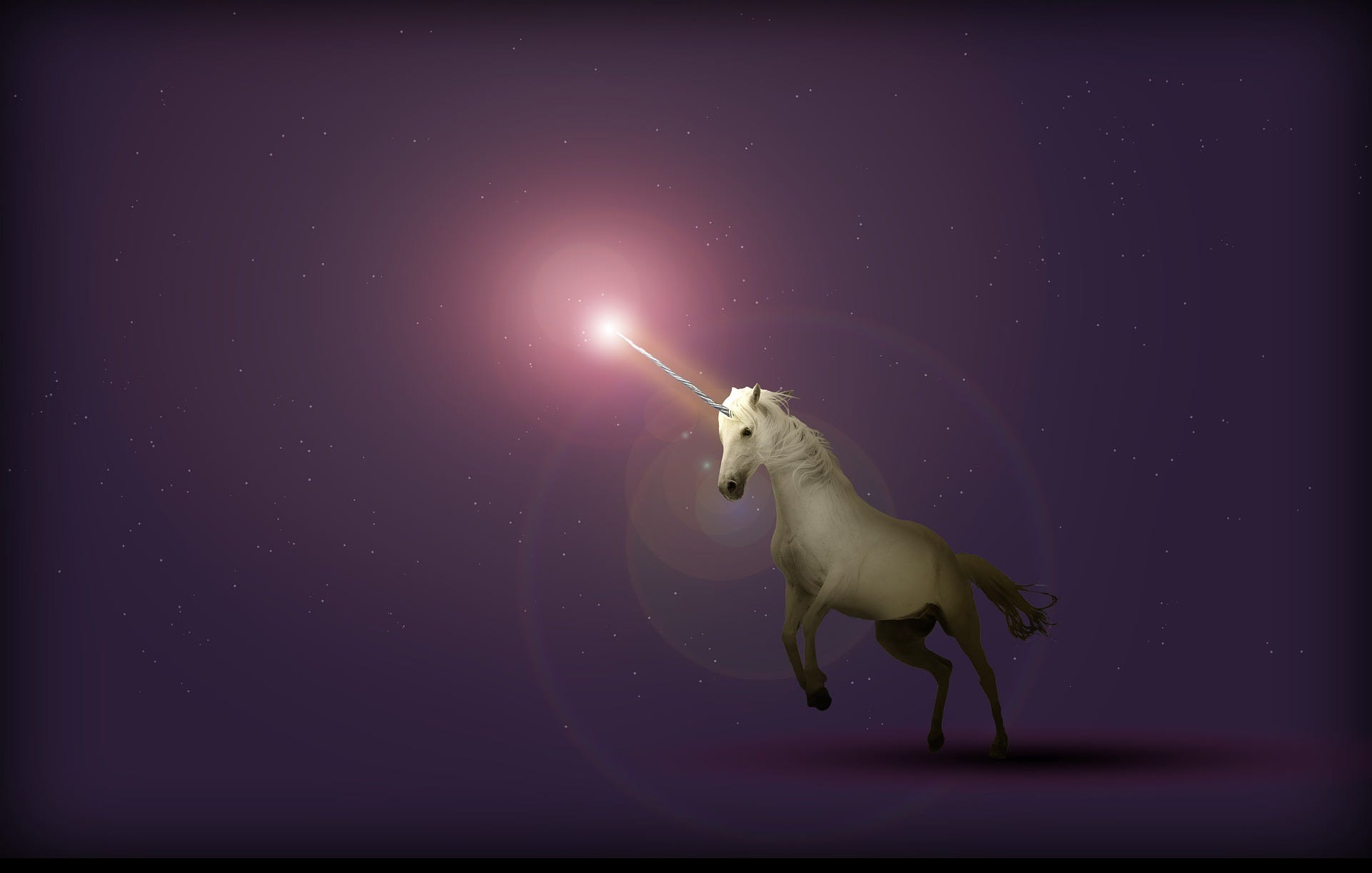

Rogue waves are unusually large, unexpected and suddenly appearing surface waves that can be extremely disruptive and dangerous, even to large ships and ocean liners.
The explosion in data and computer power has launched a series of innovation waves that converge and interact in compelling and exciting ways. Opportunities abound for folks who can anticipate, catch, and ride these waves.
This article provides some context and clarity about how converging exponential technologies are transforming every industry.
The sweeping waves are inevitable. Learn to surf. Know what’s coming so you can be adaptable, seize opportunity, and catch a wave!
Moore’s Law has been the driver.
Moore’s Law states that the number of transistors on a silicon microchip doubles every two years and that the cost of computers is cut in half every two years.

Moore’s Law is an observation and projection of a historical trend. It’s called a law, but it’s not a law of physics; it’s an empirical relationship linked to gains from experience in production.
Gordon E. Moore, the co-founder of Intel, made this observation that in 1965. It’s now called a “law” because it has held for the past 55 years.
Doubling and halving every two years are exponential functions that lead to tremendous gains and growth. This accelerating growth is the underlying function of why we carry in our pockets more computing power than NASA had when it sent astronauts to the moon.
Moore’s Law is the growth curve that these new technology trends have been riding on and why they are going to impact our lives shortly and radically.
Data is the new oil

Data is the new oil. But like oil, it is a raw commodity that needs to refinement. Data must be cleaned, organized, and analyzed for it to have value. This process is the front end activities of Data Science and engineers.
These technology trends are developing simultaneously and converging in powerful combinations. Each technology is dependent on advances and breakthroughs in the other trends mentioned here. They are stacked and networked one platform on top of and linked to the others.
And they are advancing exponentially. Exponential growth is hard for us to get our heads around. Advances can happen with explosive acceleration and leave us feeling disoriented.
Businesses can be caught flat-footed.
Every business must leverage these trends and pay attention to how best to use them to adapt and stay relevant and competitive. Leaders and managers need to evaluate how to implement these technologies to achieve their business strategy.
All of us need to be aware of these future trends because the future is where we are going to live.
Data

Data gathering, storage, and retrieval tools are advancing and driving each other.
Data is critical in making decisions. Today, data isn’t only numbers and spreadsheets. Data also includes unstructured forms like images and text.
Sentiment analysis uses natural language processing (NLP) to analyze documents like tweets, blog posts, and reports.
Computer programs review satellite images checking on cargo ships, storage containers, parking lot activity, weather patterns, and much more.
These data streams provide real-time monitoring of changing issues. Data is the resource that drives other technology trends transforming our world.
The world is becoming digitalized, and software is devouring traditional ways of doing things.
Data creates valuable insights, drives results, and makes a better client experience. The digitalization of the world is creating opportunities to extract insights from data that weren’t possible before. These new insights help improve internal operations, reduce expenses, and grow revenue.
Computing Power

All the data created by our digitized activities would be useless if not for computing power’s advances. These advances allow us to store, analyze, and display data.
Cloud storage and computing services from providers such as Amazon, Google, and Microsoft provide scalable systems and software that can be accessed where and when needed. Companies no longer have to spin up and maintain racks of servers.
Edge computing has also grown. Intelligence embedded in chips allows computing to happen not in the cloud but also where the data is collected.
Communication Networks

5G, which stands for fifth-generation, cellular network technology, will become one of the infrastructures of a smarter world.
5G will deliver communication services along with satellite Internet access like that developed by Starlink. Starlink is a satellite constellation being constructed by SpaceX to provide satellite Internet access. It is a constellation of thousands of small satellites in low Earth orbit, working in combination with ground transceivers.
Quantum computing shows the promise of being transformative in ways that defy prediction by exponentially increasing our computing power. Quantum computers provide services and solve problems that are not possible with traditional computer architectures.
These developments will create tremendous value and convenience.
Artificial Intelligence (AI) and Machine Learning (ML)

AI is the new electricity and will permeate and power everything.
Machine Learning (ML) is part of AI, but they are not the same thing. ML is a subset of AI.
AI and ML are parts of the same revolution. Machine learning is the idea that computer algorithms can learn and adapt through training. AI is the broader concept where machines execute tasks intelligently by weighing options and making decisions.
Most AI work now involves ML because intelligent behavior requires considerable knowledge, and learning is the easiest way to get that knowledge. Artificial Intelligence applies machine learning, neural networks, and other techniques to solve problems and administer tasks.
AI and ML rely on the first two trends of big data and advanced computing power. The algorithms rely on giant data sets to train and test the model, and they rely on massive computing power to crunch the data and “learn.”
Artificial intelligence will increase productivity. AI algorithms take over time-consuming, repetitive, and redundant tasks and free us to do what we do best.
Any rule-based activity is ripe for computerization with smarts to take it over.
It’s not just about adding rows and columns and crunching numbers. With the aid of AI, we will be able to act on novel insights. Computers running AI algorithms reduce costs and eliminate errors through streamed operations.
What AI does best is to analyze and process data and take care of monotonous tasks. Offloading routine functions to computers will provide us with more time to do what we do best: provide insight.
Internet of Things (IoT)

The Internet of things is the coming system of interconnected devices and machines. When IoT combines with AI, the result is the intelligence of things.
Intelligent and interconnected devices will help identify patterns and resolve issues quickly.
This continuous monitoring promises to make any activity more streamlined and stress-free. Intelligence at the edge, in devices, also improves inventory tracking and supply chain management. Companies will become more efficient at delivering goods and services.
Robots and Automation

Autonomous robots, automation, vehicles, and processes rely on mechanical systems controlled by AI and ML. If Elon Musk is correct, we are getting close to having autonomous cars and trucks. Just hop in the back seat and say “home James”!
Robots don’t have to be physical entities. Process automation can handle repetitive and time-consuming tasks such as document analysis and processing, which are abundant in everyone’s life.
Robots and automation will help monitor manufacturing processes more accurately and rapidly. Automation will help cost accountants provide accurate information in real-time.
It will be easier to be a solopreneur, just you and the robots. Freedom from mundane tasks will increase our ability to focus on strategic initiatives to reduce costs and increase income.
Drones and remote-controlled aerial vehicles can perform appraisals, inventory audits, and deliver goods.
Blockchain

Another technology trend that has significant implications for better living is blockchain. Blockchain is a distributed ledger that is highly secure.
Blockchain has broad applications in record keeping. Blockchain enables smart contracts, protects and transfers ownership of assets, verifies people’s identities and credentials, and more. If you have ever bought or sold a house, you know the crazy paperwork at the title company. Blockchain will eliminate that.
Blockchain currently expedites and accurately tracks cargo shipments around the world.
Blockchain is the technology structure underpinning cryptocurrencies like bitcoin.
Once the blockchain is widely adopted, and industry regulation is in place, businesses and individuals will benefit from reduced costs, increased traceability, and enhanced security. Blockchain promises to reduce friction in all kinds of transactions.
Conclusion
Software is eating the world. This situation threatens to disrupt traditional jobs and professions, but it is not all foreboding. These new tools will free us up to focus on higher-level tasks and interests.
Buckle up!
Receive my 7 day email course
Take your finance skills to the next level with my 7-day corporate finance email course. You'll learn all the essential topics from financial analysis to risk management in a fun, engaging format. Each day, you'll receive an email with practical examples, exercises and resources. Perfect for aspiring finance pros or anyone looking to expand their knowledge. Get ready to transform your finance game!
If you like this article. Here are some more articles I think you might like.

The Road to Becoming a Unicorn: A Quick Guide to Startup Funding Rounds

Oh Behave! Behavioral Economics: Why we do what we do.




